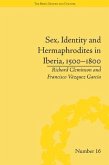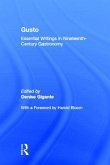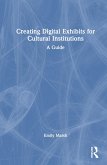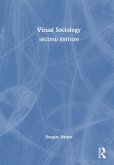- Gebundenes Buch
- Merkliste
- Auf die Merkliste
- Bewerten Bewerten
- Teilen
- Produkt teilen
- Produkterinnerung
- Produkterinnerung
First published in 2004. Routledge is an imprint of Taylor & Francis, an informa company.
Andere Kunden interessierten sich auch für
![Sex, Identity and Hermaphrodites in Iberia, 1500-1800 Sex, Identity and Hermaphrodites in Iberia, 1500-1800]() Francisco Vazquez GarciaSex, Identity and Hermaphrodites in Iberia, 1500-1800199,99 €
Francisco Vazquez GarciaSex, Identity and Hermaphrodites in Iberia, 1500-1800199,99 €![The Wars of the French Revolution The Wars of the French Revolution]() Charles J EsdaileThe Wars of the French Revolution200,99 €
Charles J EsdaileThe Wars of the French Revolution200,99 €![The Thirty Years' War The Thirty Years' War]() Geoffrey ParkerThe Thirty Years' War220,99 €
Geoffrey ParkerThe Thirty Years' War220,99 €![Gusto Gusto]() Denise GiganteGusto187,99 €
Denise GiganteGusto187,99 €![The Nazi Movement The Nazi Movement]() Theodore AbelThe Nazi Movement172,99 €
Theodore AbelThe Nazi Movement172,99 €![Creating Digital Exhibits for Cultural Institutions Creating Digital Exhibits for Cultural Institutions]() Emily MarshCreating Digital Exhibits for Cultural Institutions157,99 €
Emily MarshCreating Digital Exhibits for Cultural Institutions157,99 €![Visual Sociology Visual Sociology]() Douglas HarperVisual Sociology154,99 €
Douglas HarperVisual Sociology154,99 €-
-
-
First published in 2004. Routledge is an imprint of Taylor & Francis, an informa company.
Produktdetails
- Produktdetails
- Verlag: Routledge
- Seitenzahl: 478
- Erscheinungstermin: 28. April 2004
- Englisch
- Abmessung: 235mm x 157mm x 32mm
- Gewicht: 921g
- ISBN-13: 9780415940153
- ISBN-10: 041594015X
- Artikelnr.: 22362944
- Herstellerkennzeichnung
- Libri GmbH
- Europaallee 1
- 36244 Bad Hersfeld
- gpsr@libri.de
- Verlag: Routledge
- Seitenzahl: 478
- Erscheinungstermin: 28. April 2004
- Englisch
- Abmessung: 235mm x 157mm x 32mm
- Gewicht: 921g
- ISBN-13: 9780415940153
- ISBN-10: 041594015X
- Artikelnr.: 22362944
- Herstellerkennzeichnung
- Libri GmbH
- Europaallee 1
- 36244 Bad Hersfeld
- gpsr@libri.de
Paula Findlen is Ubaldo Pierotti Professor of Italian History and Director of the Science, Technology and Society Program at Stanford University. She is the author of Possessing Nature and coeditor of Merchants and Marvels: Commerce, Science and Art in Early Modern Europe, published by Routledge.
Introduction: Athanasius Kircher and His World Section I: The Art of Being
Kircher Chapter One: Eugenio Lo Sardo, Kircher's Rome: A Way to Understand
the Celeberrimus Museum Kircherianum Chapter Two: Martha Baldwin, Reveries
in Time of Plague: Kircher and the Plague Epidemic of 1656 Chapter Three:
Harald Siebert, Kircher and His Critics: Censorial Practice and Pragmatic
Disregard in the Society of Jesus Chapter Four: Angela Mayer-Deutsch,
'Quasi-Optical Palingenesis': The Circulation of Portraits and the Image of
Kircher Section II: The Sciences of Erudition Chapter Five: Peter Miller,
Kircher, Peiresc, and the Foundation of Coptic Studies: Or, The Quest for
Barachias Nephi Chapter Six: Daniel Stolzenberg, Four Trees, Some Amulets,
and the Seventy-Two Names of God: Kircher Reveals the Kabbalah Chapter
Seven: Anthony Grafton, Kircher's Chronology Section III: The Mysteries of
Man and the Cosmos Chapter Eight: Ingrid Rowland, Athanasius Kircher,
Giordano Bruno, and the Panspermia of the Infinite Universe Chapter Nine:
Stephen Jay Gould, Father Athanasius on the Isthmus of a Middle State:
Understanding Kircher's Paleontology, a Radical Reassessment for the Most
Important Scholar of a Fascinating Time Chapter Ten: Barbara Stafford,
Leibniz's Cosmology: Reflections in a Kircherian Mirror Section IV:
Communicating Knowledge Chapter Eleven: Haun Saussy, Magnetic Language:
Athanasius Kircher and Communication Chapter Twelve: Nick Wilding,
Publishing the Polygraphy: Manuscript, Instrument, and Print in the Work of
Athanasius Kircher Chapter Thirteen: Noel Malcolm, Private and Public
Knowledge: Kircher, Esotericism and the Republic of Letters Chapter
Fourteen: Michael John Gorman, The Angel and the Compass: Athanasius
Kircher's Geographical Project Section V: The Global Shape of Knowledge
Chapter Fifteen: Carlos Ziller Camenietzki, Baroque Science between the Old
World and the New: Father Kircher and His Fellow Jesuit, Valentin Stansel
(1621-1705) Chapter Sixteen: Paula Findlen, A Jesuit's Books in the New
World: Athanasius Kircher and His American Readers Chapter Seventeen:
Michelle Molina, True Lies: Kircher's China Illustrata and the Life Story
of a Mexican Mystic Chapter Eighteen: Florence Hsia Athanasius Kircher's
China Illustrata (1667): An apologia pro sua vita Epilogue: The Afterlife
of a Polymath Antonella Romano, Kircher in Context
Kircher Chapter One: Eugenio Lo Sardo, Kircher's Rome: A Way to Understand
the Celeberrimus Museum Kircherianum Chapter Two: Martha Baldwin, Reveries
in Time of Plague: Kircher and the Plague Epidemic of 1656 Chapter Three:
Harald Siebert, Kircher and His Critics: Censorial Practice and Pragmatic
Disregard in the Society of Jesus Chapter Four: Angela Mayer-Deutsch,
'Quasi-Optical Palingenesis': The Circulation of Portraits and the Image of
Kircher Section II: The Sciences of Erudition Chapter Five: Peter Miller,
Kircher, Peiresc, and the Foundation of Coptic Studies: Or, The Quest for
Barachias Nephi Chapter Six: Daniel Stolzenberg, Four Trees, Some Amulets,
and the Seventy-Two Names of God: Kircher Reveals the Kabbalah Chapter
Seven: Anthony Grafton, Kircher's Chronology Section III: The Mysteries of
Man and the Cosmos Chapter Eight: Ingrid Rowland, Athanasius Kircher,
Giordano Bruno, and the Panspermia of the Infinite Universe Chapter Nine:
Stephen Jay Gould, Father Athanasius on the Isthmus of a Middle State:
Understanding Kircher's Paleontology, a Radical Reassessment for the Most
Important Scholar of a Fascinating Time Chapter Ten: Barbara Stafford,
Leibniz's Cosmology: Reflections in a Kircherian Mirror Section IV:
Communicating Knowledge Chapter Eleven: Haun Saussy, Magnetic Language:
Athanasius Kircher and Communication Chapter Twelve: Nick Wilding,
Publishing the Polygraphy: Manuscript, Instrument, and Print in the Work of
Athanasius Kircher Chapter Thirteen: Noel Malcolm, Private and Public
Knowledge: Kircher, Esotericism and the Republic of Letters Chapter
Fourteen: Michael John Gorman, The Angel and the Compass: Athanasius
Kircher's Geographical Project Section V: The Global Shape of Knowledge
Chapter Fifteen: Carlos Ziller Camenietzki, Baroque Science between the Old
World and the New: Father Kircher and His Fellow Jesuit, Valentin Stansel
(1621-1705) Chapter Sixteen: Paula Findlen, A Jesuit's Books in the New
World: Athanasius Kircher and His American Readers Chapter Seventeen:
Michelle Molina, True Lies: Kircher's China Illustrata and the Life Story
of a Mexican Mystic Chapter Eighteen: Florence Hsia Athanasius Kircher's
China Illustrata (1667): An apologia pro sua vita Epilogue: The Afterlife
of a Polymath Antonella Romano, Kircher in Context
Introduction: Athanasius Kircher and His World Section I: The Art of Being
Kircher Chapter One: Eugenio Lo Sardo, Kircher's Rome: A Way to Understand
the Celeberrimus Museum Kircherianum Chapter Two: Martha Baldwin, Reveries
in Time of Plague: Kircher and the Plague Epidemic of 1656 Chapter Three:
Harald Siebert, Kircher and His Critics: Censorial Practice and Pragmatic
Disregard in the Society of Jesus Chapter Four: Angela Mayer-Deutsch,
'Quasi-Optical Palingenesis': The Circulation of Portraits and the Image of
Kircher Section II: The Sciences of Erudition Chapter Five: Peter Miller,
Kircher, Peiresc, and the Foundation of Coptic Studies: Or, The Quest for
Barachias Nephi Chapter Six: Daniel Stolzenberg, Four Trees, Some Amulets,
and the Seventy-Two Names of God: Kircher Reveals the Kabbalah Chapter
Seven: Anthony Grafton, Kircher's Chronology Section III: The Mysteries of
Man and the Cosmos Chapter Eight: Ingrid Rowland, Athanasius Kircher,
Giordano Bruno, and the Panspermia of the Infinite Universe Chapter Nine:
Stephen Jay Gould, Father Athanasius on the Isthmus of a Middle State:
Understanding Kircher's Paleontology, a Radical Reassessment for the Most
Important Scholar of a Fascinating Time Chapter Ten: Barbara Stafford,
Leibniz's Cosmology: Reflections in a Kircherian Mirror Section IV:
Communicating Knowledge Chapter Eleven: Haun Saussy, Magnetic Language:
Athanasius Kircher and Communication Chapter Twelve: Nick Wilding,
Publishing the Polygraphy: Manuscript, Instrument, and Print in the Work of
Athanasius Kircher Chapter Thirteen: Noel Malcolm, Private and Public
Knowledge: Kircher, Esotericism and the Republic of Letters Chapter
Fourteen: Michael John Gorman, The Angel and the Compass: Athanasius
Kircher's Geographical Project Section V: The Global Shape of Knowledge
Chapter Fifteen: Carlos Ziller Camenietzki, Baroque Science between the Old
World and the New: Father Kircher and His Fellow Jesuit, Valentin Stansel
(1621-1705) Chapter Sixteen: Paula Findlen, A Jesuit's Books in the New
World: Athanasius Kircher and His American Readers Chapter Seventeen:
Michelle Molina, True Lies: Kircher's China Illustrata and the Life Story
of a Mexican Mystic Chapter Eighteen: Florence Hsia Athanasius Kircher's
China Illustrata (1667): An apologia pro sua vita Epilogue: The Afterlife
of a Polymath Antonella Romano, Kircher in Context
Kircher Chapter One: Eugenio Lo Sardo, Kircher's Rome: A Way to Understand
the Celeberrimus Museum Kircherianum Chapter Two: Martha Baldwin, Reveries
in Time of Plague: Kircher and the Plague Epidemic of 1656 Chapter Three:
Harald Siebert, Kircher and His Critics: Censorial Practice and Pragmatic
Disregard in the Society of Jesus Chapter Four: Angela Mayer-Deutsch,
'Quasi-Optical Palingenesis': The Circulation of Portraits and the Image of
Kircher Section II: The Sciences of Erudition Chapter Five: Peter Miller,
Kircher, Peiresc, and the Foundation of Coptic Studies: Or, The Quest for
Barachias Nephi Chapter Six: Daniel Stolzenberg, Four Trees, Some Amulets,
and the Seventy-Two Names of God: Kircher Reveals the Kabbalah Chapter
Seven: Anthony Grafton, Kircher's Chronology Section III: The Mysteries of
Man and the Cosmos Chapter Eight: Ingrid Rowland, Athanasius Kircher,
Giordano Bruno, and the Panspermia of the Infinite Universe Chapter Nine:
Stephen Jay Gould, Father Athanasius on the Isthmus of a Middle State:
Understanding Kircher's Paleontology, a Radical Reassessment for the Most
Important Scholar of a Fascinating Time Chapter Ten: Barbara Stafford,
Leibniz's Cosmology: Reflections in a Kircherian Mirror Section IV:
Communicating Knowledge Chapter Eleven: Haun Saussy, Magnetic Language:
Athanasius Kircher and Communication Chapter Twelve: Nick Wilding,
Publishing the Polygraphy: Manuscript, Instrument, and Print in the Work of
Athanasius Kircher Chapter Thirteen: Noel Malcolm, Private and Public
Knowledge: Kircher, Esotericism and the Republic of Letters Chapter
Fourteen: Michael John Gorman, The Angel and the Compass: Athanasius
Kircher's Geographical Project Section V: The Global Shape of Knowledge
Chapter Fifteen: Carlos Ziller Camenietzki, Baroque Science between the Old
World and the New: Father Kircher and His Fellow Jesuit, Valentin Stansel
(1621-1705) Chapter Sixteen: Paula Findlen, A Jesuit's Books in the New
World: Athanasius Kircher and His American Readers Chapter Seventeen:
Michelle Molina, True Lies: Kircher's China Illustrata and the Life Story
of a Mexican Mystic Chapter Eighteen: Florence Hsia Athanasius Kircher's
China Illustrata (1667): An apologia pro sua vita Epilogue: The Afterlife
of a Polymath Antonella Romano, Kircher in Context









